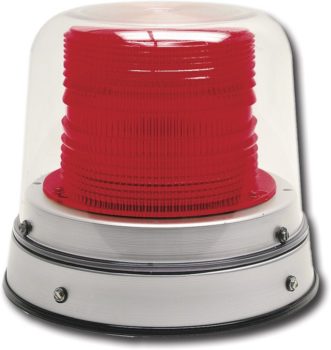Emergency Vehicle Rotating Lights
Emergency vehicle rotating lights are often the visual equivalent of a bell or siren, alerting other drivers to move out of the way and let a vehicle pass.
Flashing lights on ambulances, firetrucks and police cars allow first responders to get to the scene of an emergency quickly. Sometimes, their flashing indicates caution; tow trucks, cement trucks and other large vehicles use light bars to make other drivers aware of the load they carry. Color can also tell a story with rotating lights. A firetruck’s red strobes, the alternating red and blue of a police car and the yellow lights from a tow truck tell others on the road how to react.
Types of Emergency Vehicle Lights
Police cars and ambulances have undergone numerous technological advances, and so have the emergency lights they wear. Flashing light bars are now available in three types: rotating lights, strobes and LED arrays. Each kind of lighting has its advantages, and each is still in common use.
Rotating lights work much like a lighthouse’s roving spotlight, turning rapidly to create a strobe-like effect. Reflectors around an incandescent or halogen bulb intensify the light and direct it into a beam. The reflector and bulb apparatus is mounted on a miniature turntable and spins, making the light appear to flash on and off. In antique versions, colored glass surrounds the flashing light, but modern versions use a shatter-resistant plastic housing.
Strobe lights have a similar effect to traditional rotating lights, but they use the rapid flash of the bulb itself instead of rotation to make the light flicker. These lights are as bright and sudden as a camera flash. Like rotating lights, they have a colored plastic housing that suits the lighting array to its intended purpose. The light from the xenon flash lamps in strobes has a blue cast that makes red emergency lights look slightly pink or purple sometimes.
Compact, brilliant LED lights flash as rapidly as strobes, but they need no colorful casing around them because the lights themselves are colored. Light-emitting diodes produce intensely bright light from tiny sources, so an LED light bar or flasher can be quite small. These solid-state lights have a long life and use little power, but because they generate no heat, they are prone to icing over in cold climates. Some lighting arrays include a heater to keep LEDs clear of snow and ice.
How Are Rotating Emergency Lights Used?
First responders must get to emergencies as quickly as possible. The flashing red lights on a firetruck or ambulance tell other drivers to make way for a vehicle on an urgent call. Every second counts when transporting a critically ill patient, fighting a fire or stopping a crime in progress, so emergency vehicles are almost always outfitted with rotating lights or their newer equivalents. Usually accompanied by sirens, these warning lights give emergency vehicles the right of way.
Anyone who has seen a police car’s flashing lights in the rear view mirror knows that they serve as effective signaling devices. An officer can turn on the lights for a moment to signal a need to pass or direct a driver to pull over for a traffic stop. Some LED displays can spell out words and supply more detailed instructions.
Rotating lights sometimes signal a need for caution. Large vehicles that make wide right turns or carry heavy cargo often use rotating light displays to make other drivers aware of their position. Typically outfitted with amber lights, these vehicles are easily distinguishable from first responders’ red or blue lights.

